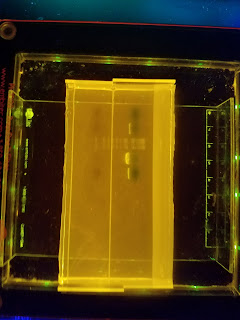Week 7
I got right back into the swing of things this week, and learned how to perform even more procedures as my project progresses. On Monday, my mentor told me that he had already gone ahead and sent in the previous week's samples for sequencing (the final step of the cloning process) during my hiatus. The results hadn't arrived yet, though, so I instead practiced the next step: in vitro transcription. Although DNA is the ultimate blueprint for making proteins and therefore organisms, it is not actually directly translated into them. That role belongs to an intermediate molecule known as RNA, which is produced in the cell's nucleus using DNA as a template. After RNA is translated into proteins, it breaks down, halting the production of proteins but leaving the original DNA unaffected. What we had at that point was DNA; injecting it into the egg cells would do nothing, as the cell would continue to only express the DNA in its original genome. However, RNA would be i

